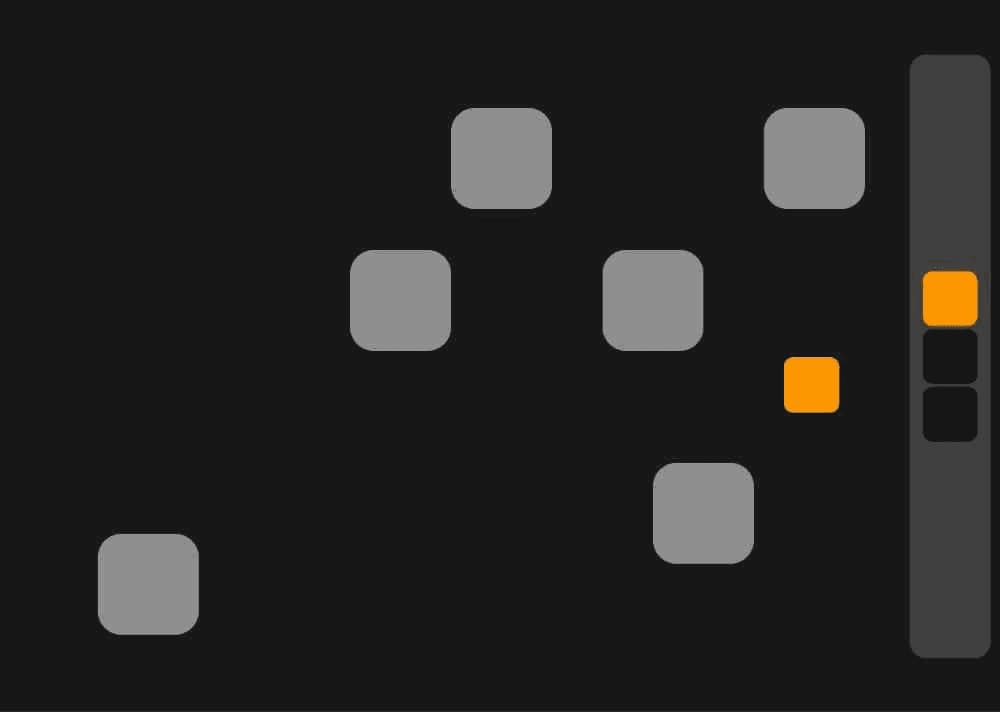
Find the hidden, fill the scale
A test for assessing spatial working memory and processing visual-spatial information. The test starts with
boxes displayed on the screen. The aim of this test is to choose a box and, using a process of elimination,
find the yellow "tokens" and use them to fill the empty column on the right side. Depending on the level of
difficulty/iteration, the number of boxes gradually increases until a maximum of 10 boxes are shown for
searching.

Matching Colors
This test engages reaction speed, accuracy, and spatial color perception. In this test, a cross and a dot
(always in the center) change their colors independently and in a chaotic manner. The respondent needs to
press on the cross when the color of the dot matches the color of the cross.

Assessment of Basic Motor Skills
A cross appears on the screen, which the respondent must press, after which the cross will change its
position. The test evaluates both response speed and positioning accuracy.
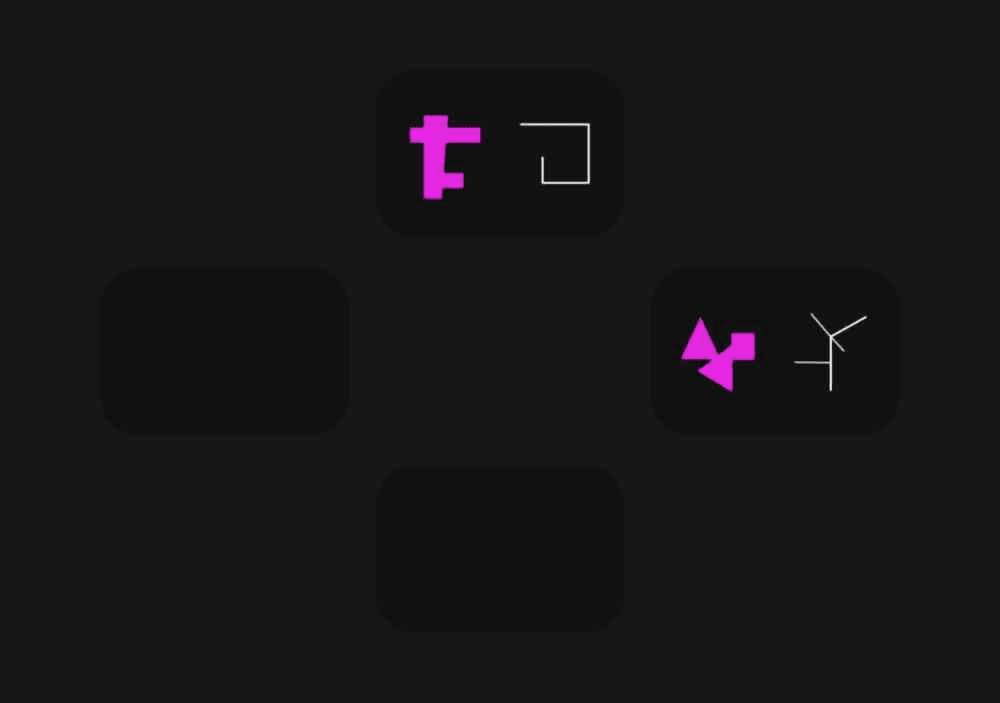
Search for the Correct Answer
This test is for identifying rules and the correct response. It's a computerized equivalent of the
Wisconsin Card Sorting Test. In this task, respondents must use feedback to establish a rule determining
which stimulus is correct. After six correct answers, the stimuli and/or rules change. Initially, the task
will involve simple stimuli, consisting only of a single dimension. Subsequently, composite stimuli are
used: white lines are superimposed on pink figures.

Search for the Correct Sequence
Boxes are displayed on the screen, some of which briefly change color in a variable sequence. The
respondent then has to select the boxes in the same order they changed color. The number of boxes in the
sequence increases from two at the start of the test to ten at the end.

Search for the Presented Pattern
This test assesses attention and visual search, considering response speed, accuracy, and response
complexity. The respondent is shown a complex visual pattern in the center of the screen. After a brief
delay, varying amounts of similar patterns are displayed in a circle of rectangles around the perimeter.
Only one of these patterns matches the pattern in the center of the screen, and the participant has to
indicate which one by selecting it.

Search for the Correct Hidden Pattern
Assesses the ability for simultaneous visual matching, as well as short-term visual recognition memory for
non-verbal patterns. The participant is shown a complex image, followed after a brief delay by four similar
images. The respondent must choose the image that matches the sample.
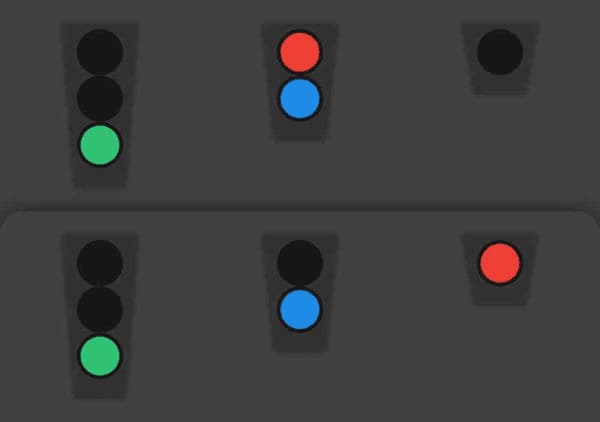
Permutation to Replicate the Pattern
A spatial planning test that requires respondents to use problem-solving strategies. On the screen, a
pattern and an interaction field are displayed. The respondent must move the balls in the lower field to
replicate the ball arrangement from the pattern.
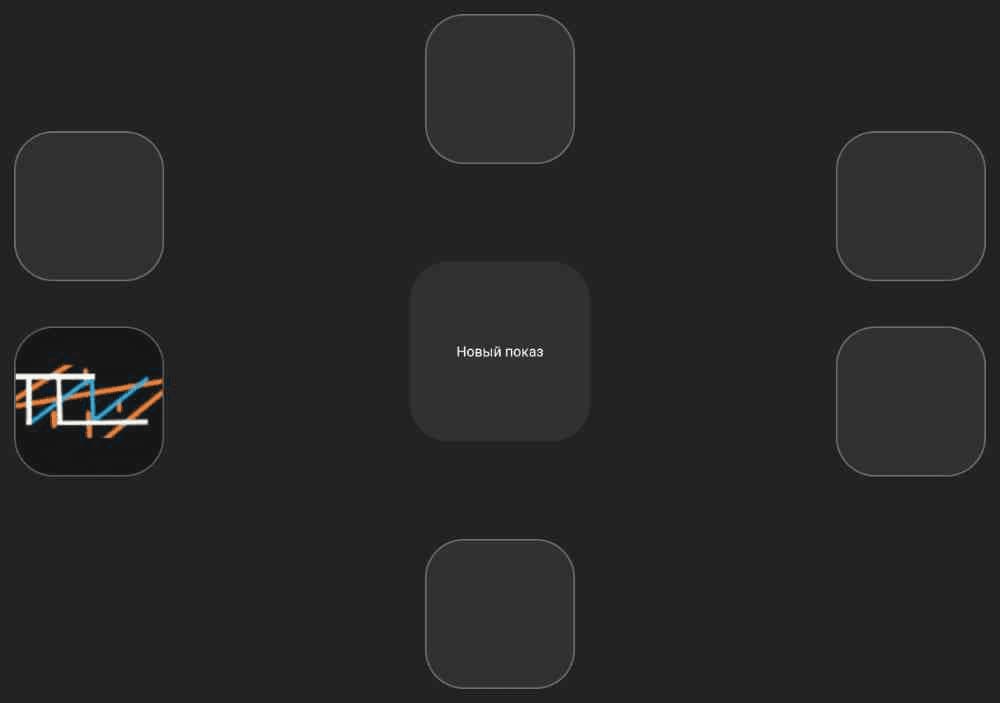
Remember the Position and Point Out
This test evaluates visual memory. Boxes are displayed on the screen and "open" in random order. One or
several of them will contain an image. Then, the images are displayed in the center of the screen one by
one, and the respondent must choose the box where the image was originally located. The number of mistakes
made during each iteration and positioning accuracy are assessed.

Reaction Time, Accuracy
This test measures the speed of motor and cognitive reactions, as well as movement time, reaction time,
accuracy, and impulsivity.
The respondent must press and hold a button at the bottom of the screen. In one of the circles displayed
above, a green dot appears and disappears; the respondent must react as quickly as possible, releasing the
button at the bottom of the screen and pressing the circle that changed color.





